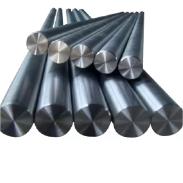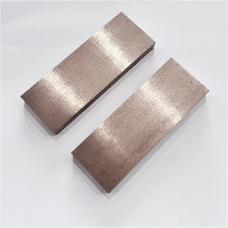**Metal Makeover: The Art of Cloaking One Metal with Another**
(How To Plate A Metal Onto Another)
Ever wondered how jewelry gets that shiny gold finish or why your car’s rims never rust? The secret is metal plating—a process that lets one metal wear another like a disguise. Think of it as a science-backed magic trick. Let’s break it down without the jargon.
First, metal plating isn’t just slapping two metals together. It’s chemistry in action. The goal is simple: stick a thin layer of one metal (like gold or nickel) onto another (like copper or steel). The trick? Electricity. This method is called electroplating.
You’ll need a few basics. Grab the metal you want to coat (the “base”). Pick the metal you’ll use as the coating (the “top layer”). You’ll also need a liquid solution that carries metal ions, a power source (like a battery), and wires to connect everything. Safety gear matters too—gloves and goggles are non-negotiable.
Start by cleaning the base metal. Dirt or grease ruins the process. Scrub it with soap and water. For stubborn grime, use sandpaper or a mild acid bath. Rinse it thoroughly. A single fingerprint can mess things up, so handle it like a fragile heirloom.
Next, set up the plating bath. Fill a container with the solution—say, nickel chloride if you’re plating with nickel. Connect the base metal to the negative wire (cathode) and the coating metal to the positive wire (anode). Drop both into the solution. Flip the power switch, and watch the ions move.
Here’s the science part. Electricity pulls metal ions from the anode into the solution. These ions then cling to the base metal. The longer you leave it, the thicker the coating. But patience is key. Rush it, and the layer turns lumpy or peels off.
Timing varies. A thin decorative coat might take minutes. Industrial-grade plating? Hours. Keep an eye on it. If bubbles form on the base metal, that’s normal. If the solution turns cloudy, something’s wrong—maybe contaminated materials.
Pull out the base metal once done. Rinse it under water to stop the chemical reaction. Dry it with a clean cloth. Buff it gently for extra shine. Voilà—your metal just got a fancy upgrade.
Not all metals play nice. Copper sticks to steel easily, but plating silver on aluminum? Tricky. Research compatibility first. Some metals need a middle layer. For example, plating gold on steel often requires a nickel buffer.
Mistakes happen. If the coating flakes, the base wasn’t clean enough. If it looks blotchy, the power supply might be uneven. Practice on scrap metal first. Even pros trial-and-error their way to perfection.
Cost matters. Gold plating is pricey, but nickel or zinc are budget-friendly. Choose based on need. Jewelry demands gold; tools might just need zinc for rust protection.
Skip shortcuts. Some DIY hacks suggest vinegar or soda as solutions. These rarely work. Stick to proper chemicals. Safety first—work in a ventilated area. Breathing in metal fumes is bad news.
Why plate metals? Looks matter, but so does function. Plating prevents rust, reduces friction, or even boosts electrical conductivity. It’s why your grandma’s silverware stays shiny and why spacecraft survive harsh conditions.
Advanced methods exist. Electroless plating uses chemicals, not electricity. It’s slower but coats hard-to-reach spots evenly. Then there’s immersion plating, where the base metal swaps ions with the coating metal in a solution. No wires needed.
Still, electroplating rules for control and speed. Industries rely on it for mass production. Fancy car parts? Electroplated. That sleek smartphone finish? Electroplated.
Remember, plating isn’t forever. Wear and tear thin the layer. Re-plating fixes this. Treat plated items gently. Avoid harsh cleaners or scrubbing.
Curious to try? Start small. A copper-plated keychain or nickel-plated coin makes a fun project. Online stores sell starter kits. Follow instructions, stay safe, and embrace the trial runs.
(How To Plate A Metal Onto Another)
Metal plating blends art and science. It’s transformation at a microscopic level—one ion at a time. Whether for bling or practicality, it’s proof that even metals can reinvent themselves.
Inquiry us
if you want to want to know more, please feel free to contact us. (nanotrun@yahoo.com)


